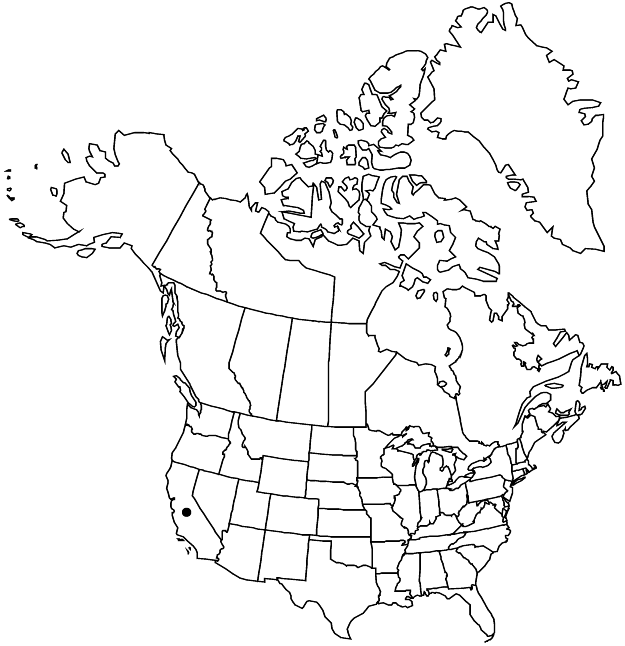Difference between revisions of "Chorizanthe cuspidata var. villosa"
Aliso 4: 89. 1958.
FNA>Volume Importer |
FNA>Volume Importer |
||
| Line 11: | Line 11: | ||
|name=Chorizanthe villosa | |name=Chorizanthe villosa | ||
|authority=Eastwood | |authority=Eastwood | ||
| + | |rank=species | ||
|publication_title=Bull. Torrey Bot. Club | |publication_title=Bull. Torrey Bot. Club | ||
|publication_place=30: 485. 1903 | |publication_place=30: 485. 1903 | ||
| Line 30: | Line 31: | ||
|distribution=Calif. | |distribution=Calif. | ||
|discussion=<p>Of conservation concern.</p><!-- | |discussion=<p>Of conservation concern.</p><!-- | ||
| − | --><p>Variety villosa is more common than < | + | --><p>Variety villosa is more common than <i></i>var.<i> cuspidata</i>, due in part to habitat protection provided at Point Reyes National Seashore. Villose spineflower occurs from Point Reyes in Marin County to Bodega Bay in Sonoma County. Some of the awns of <i></i>var.<i> villosa</i> may become bent due to pressing so as to resemble those of <i></i>var.<i> cuspidata</i>. In the field, some truly uncinate awns can be found occasionally on individual involucres in <i></i>var.<i> villosa</i>, but the condition is never uniform throughout the plant.</p> |
|tables= | |tables= | ||
|references= | |references= | ||
| Line 39: | Line 40: | ||
-->{{#Taxon: | -->{{#Taxon: | ||
name=Chorizanthe cuspidata var. villosa | name=Chorizanthe cuspidata var. villosa | ||
| − | |||
|authority=(Eastwood) Munz | |authority=(Eastwood) Munz | ||
|rank=variety | |rank=variety | ||
| Line 54: | Line 54: | ||
|publication year=1958 | |publication year=1958 | ||
|special status= | |special status= | ||
| − | |source xml=https://jpend@bitbucket.org/aafc-mbb/fna-data-curation.git/src/ | + | |source xml=https://jpend@bitbucket.org/aafc-mbb/fna-data-curation.git/src/f50eec43f223ca0e34566be0b046453a0960e173/coarse_grained_fna_xml/V5/V5_946.xml |
|subfamily=Polygonaceae subfam. Eriogonoideae | |subfamily=Polygonaceae subfam. Eriogonoideae | ||
|genus=Chorizanthe | |genus=Chorizanthe | ||
Revision as of 21:58, 16 December 2019
Plants ascending to slightly erect, 0.5–2 × 0.5–10 dm. Leaf blades 1–5 × 0.4–1 cm. Involucres (2–)2.5–3 mm, without scarious margins, awns straight, rarely curved or with 1 awn uncinate. Flowers 2.5–3 mm. Achenes 2.5–3 mm. 2n = 38, 40, 42.
Phenology: Flowering May–Aug.
Habitat: Sandy places, coastal scrub communities
Elevation: 0-60 m
Discussion
Of conservation concern.
Variety villosa is more common than var. cuspidata, due in part to habitat protection provided at Point Reyes National Seashore. Villose spineflower occurs from Point Reyes in Marin County to Bodega Bay in Sonoma County. Some of the awns of var. villosa may become bent due to pressing so as to resemble those of var. cuspidata. In the field, some truly uncinate awns can be found occasionally on individual involucres in var. villosa, but the condition is never uniform throughout the plant.
Selected References
None.
